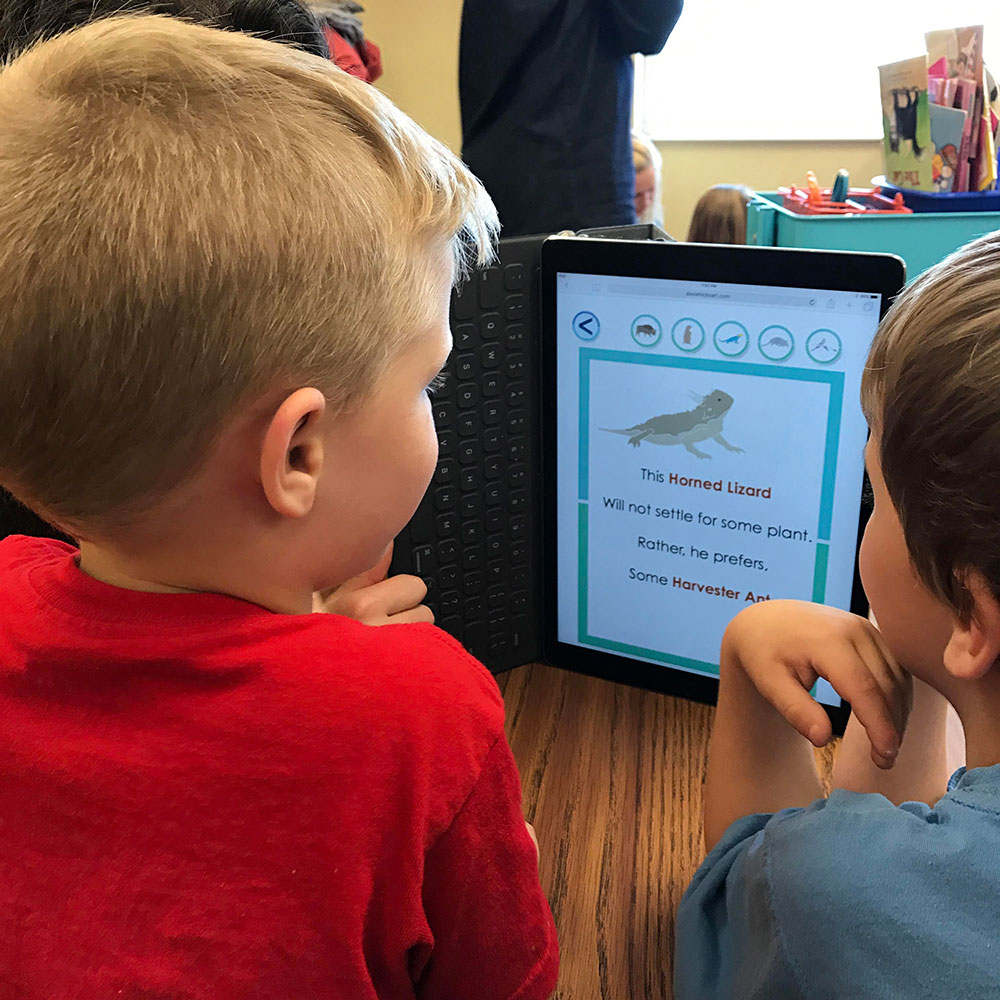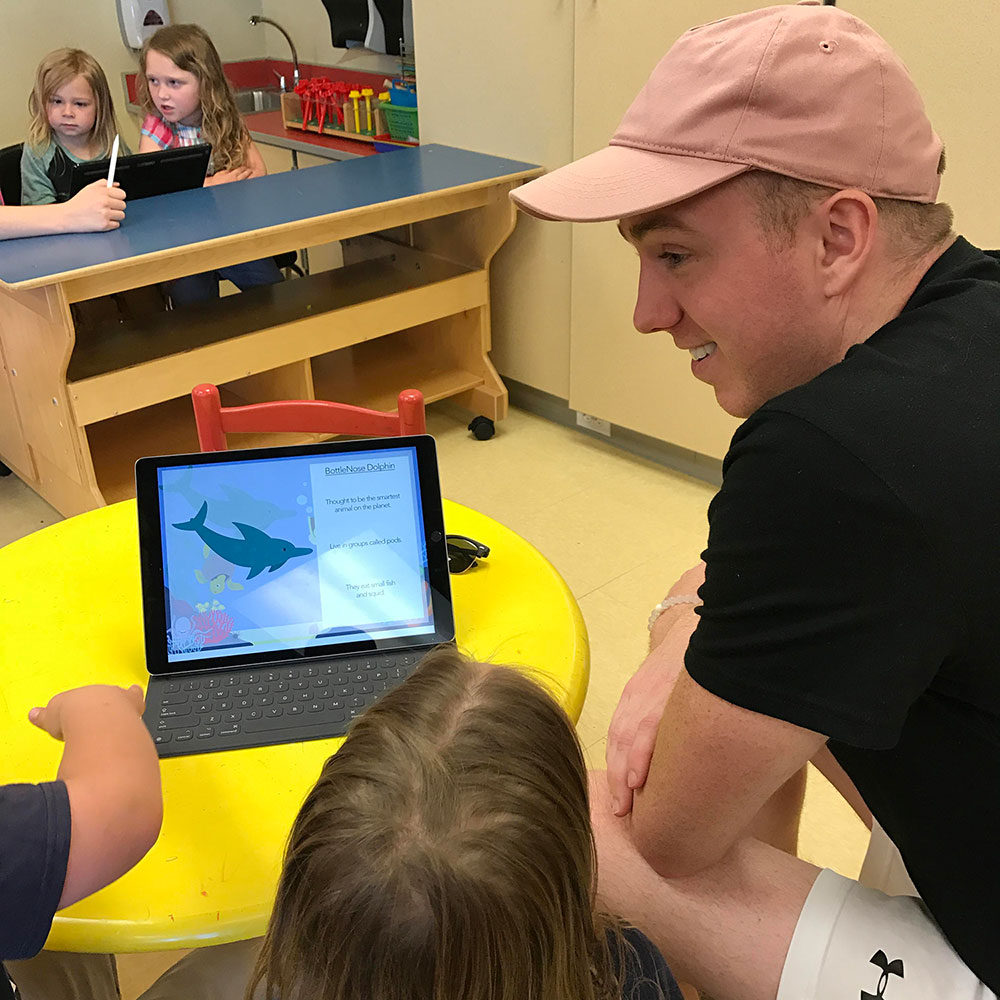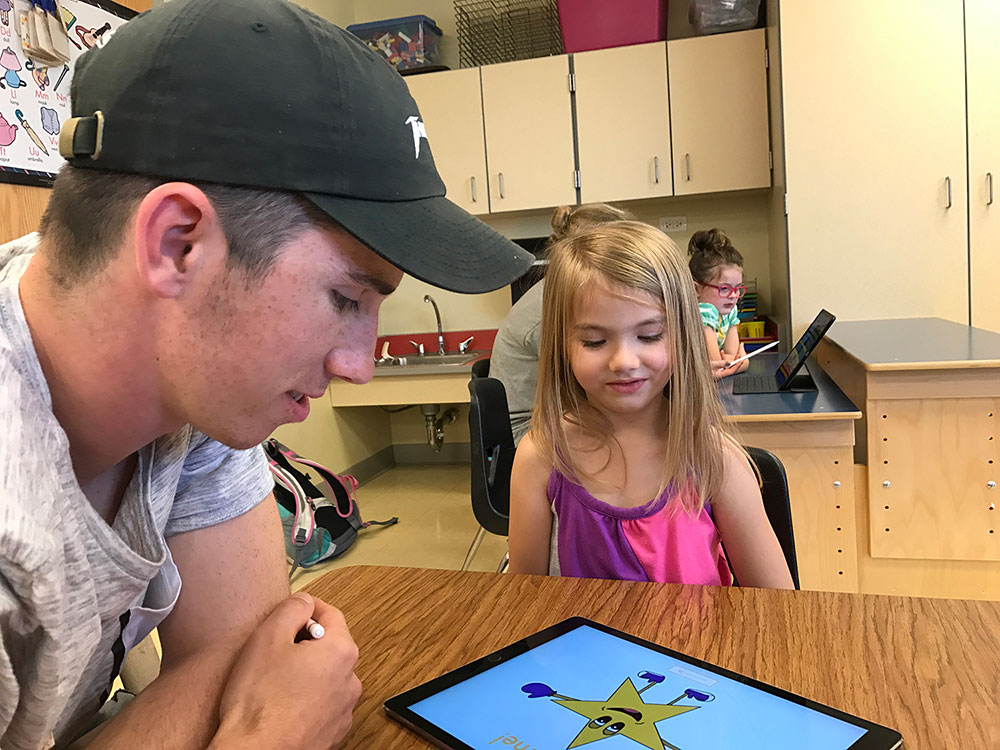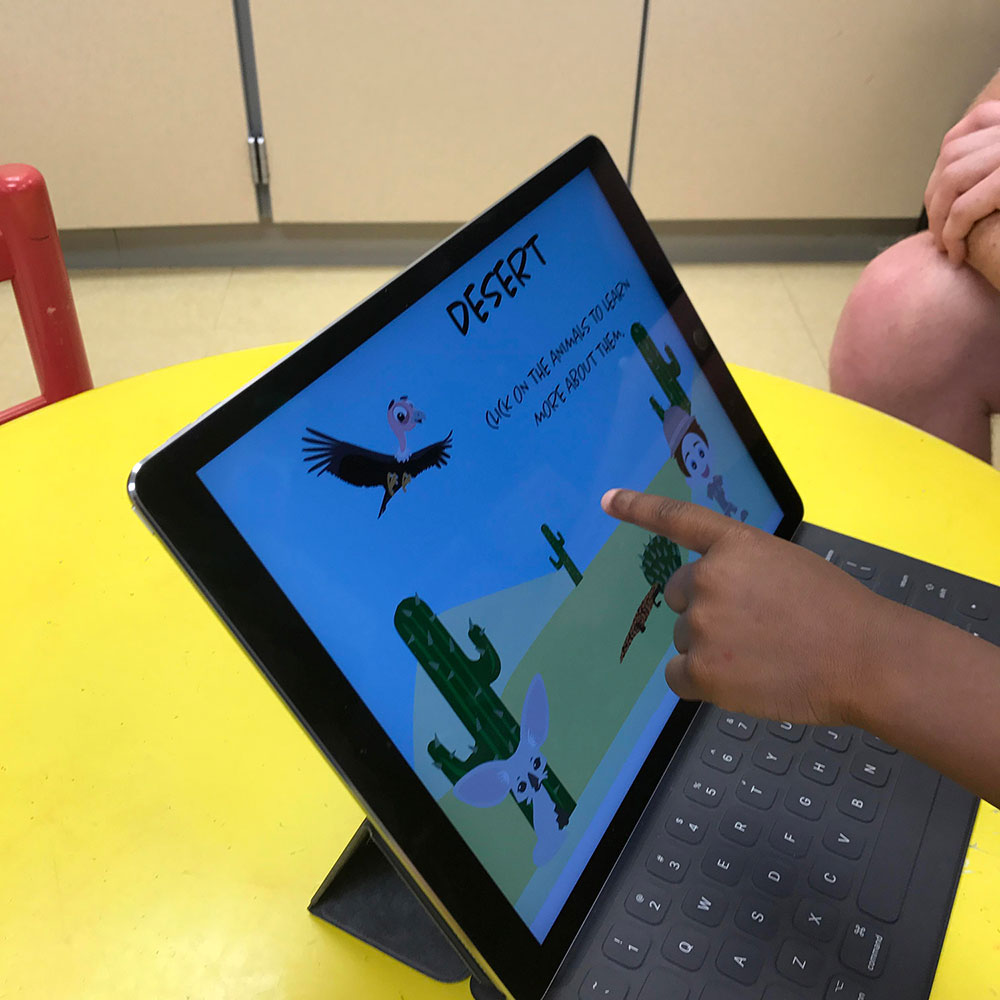OBU Design Students Build Learning Apps, Teach Local Kids at SECC
June 19, 2017
During the spring semester, six Oklahoma Baptist University students designed educational apps. To conclude the project, they visited students at the Shawnee Early Childhood Center (SECC) in May to see how their work paid off. The students were part of an interactive design class, taught by Corey Fuller, associate professor of graphic design and chair of the Division of Art and Design.
While the assignment was Fuller’s idea, the apps built by students were completely original and developed single-handedly. The students developed the concept, graphics and interface of the app. The goal was to make the apps interactive, with an eye toward four- and five-year-olds. Students used a variety of programs throughout the course to build interactive experiences. They employed Adobe Muse and Dreamweaver as well as an app called Marvel, which mocks up interactive experiences.
The OBU students each developed their own app and focused them on specific themes or educational objectives. The students who participated in the project, along with the theme of their apps, included Sarah Gilstad, Oklahoma wildlife; Madi Crow, what to wear in certain weather conditions; Angel O’Brien, healthy eating habits; Zac Trosper, aquatic life; Paden Rogers, drawing and identifying various shapes; and Keith Fraaken, taking a tour on a rocket ship to learn about different planets in the solar system.
The OBU students were then able to see firsthand what the children found fun and interesting, what may have been over the children’s heads a bit, or conversely, what they found too easy or boring. This was a valuable learning experience for the university students while being fun for them and the children.
“Design as a practice and profession is very different from art, as it is not about expression and open to interpretation,” Fuller said. “Design attempts to communicate succinctly a clear message to a particular audience. Design success depends on the fidelity of the received message to the sent message.”
When asked about the overall experience for the children and the OBU students, Fuller added, “They really had a ball, both the designers and the clients. The OBU students had two or three Shawnee Early Childhood Center students viewing the app at a time, so the developers encouraged the students to take turns and work together to solve the problems. The groups rotated, so the designers had a chance to interact with around 20 different students. Afterward, they were able to make corrections and fixes based on the students' responses. Four- and five-year-olds aren't able to reflect openly on flaws in the interface per se, so the designer has to ‘listen’ with his or her eyes as to what they're saying as they engage the app.”
Fuller credits his partnership with Mrs. Becky Thompson, the teacher of the class Fuller and his students visited at SECC, as a pivotal role in the success of the interaction between the OBU students and the children.
“I'd like to publicly thank Mrs. Becky Thompson for allowing us the opportunity,” he said. “I think it was a win/win for her students and mine, and I hope to continue to do projects such as this with Shawnee Public Schools. I'd also like to thank Britton Buss and Paul Roberts [OBU employees] for affording us this opportunity. They granted us iPad Pros for this semester which was a real game changer in how we were able to design content, as well as how we created presentations and facilitated critique.”
Overall, the whole experience was positive for those involved.
“One of the SECC student's parents even commented on Facebook what a great time her son had with the app. She posted a picture of an octopus he'd drawn based on the OBU student Zac Trosper's interface,” Fuller added.




